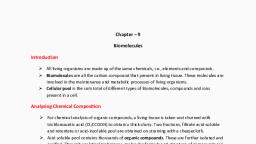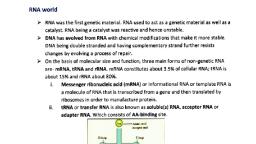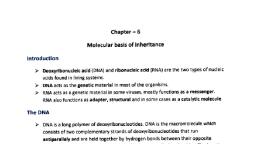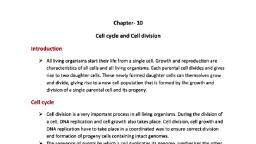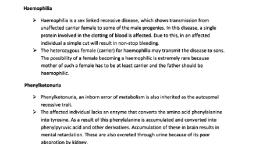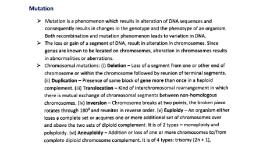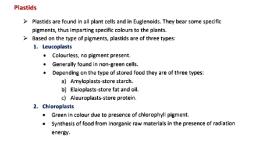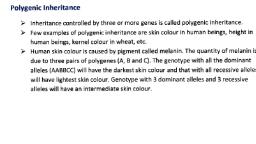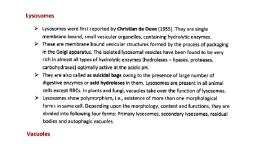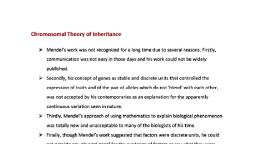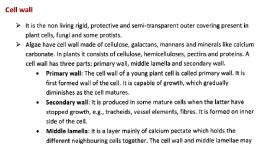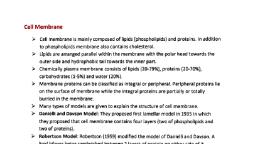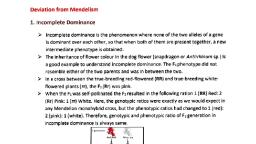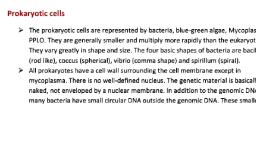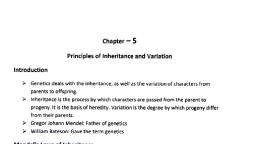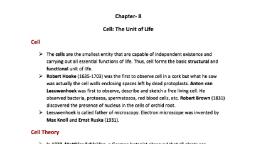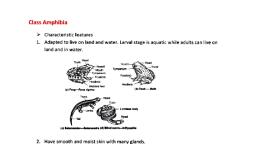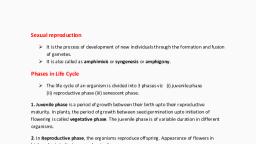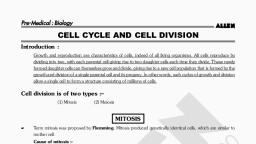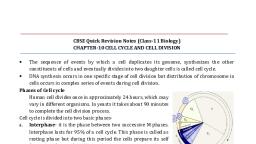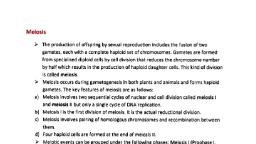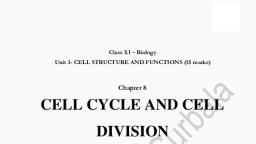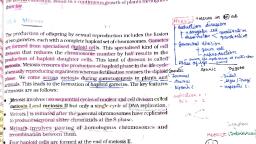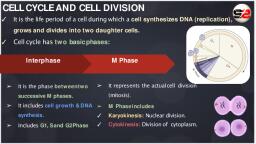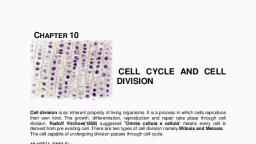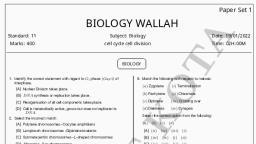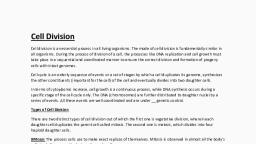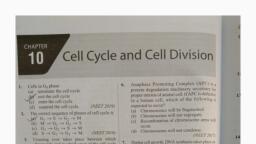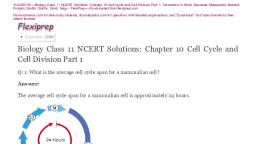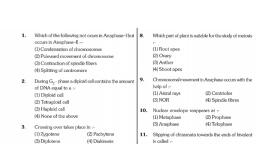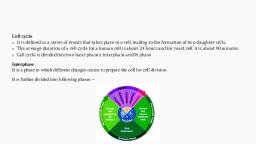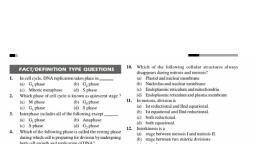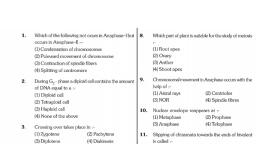Page 1 :
Meiosis, The production of offspring by sexual reproduction includes the fusion of two, gametes, each with a complete haploid set of chromosomes. Gametes are formed, from specialised diploid cells by cell division that reduces the chromosome number, by half which results in the production of haploid daughter cells. This kind of division, is called melosis., , Meiosis occurs during gametogenesis in both plants and animals and forms haploid, gametes. The key features of meiosis are as follows:, , a) Melosis involves two sequential cycles of nuclear and cell division called melosis I, and meiosis Il but only a single cycle of DNA replication., b) Meiosis lis the first division of meiosis. It is the actual reductional division., , c) Meiosisinvolves pairing of homologous chromosomes and recombination between, them., , d) Four haploid cells are formed at the end of meiosis ll., , Meiotic events can begrouped under the following phases: Meiosis (Prophasel,, Metaphase , Anaphase I and Telophase I) and Meiosis ll (Prophase l, Metaphase I,, Anaphase ll and Telophase l)., , Meiosis, The heterotyplc or reduction division is the first division af meiosis, that starts after, the interphase of the cell cycle. During this division, the number of chromosomes Is, , reduced to half., Prophase I: Prophase of the first meiotic division is typically longer and more, , complex when compared to prophase of mitosis. It is further divided into following, , five phases: leptotene, zygotene, pachytene, diplotene and diakinesis., Centrioles, , Chromosomes, , -Cell membrane, , Nucdeolus, Fig:Leptotene, HomologoUs Chromosomes, 7Sters, , ygotene, , iLeptotene: The compaction of chromosomes continues throughout, leptotene. The chromosomes become gradually visible.
Page 2 :
Zygotene: During this stage chromosomes start pairing together and this, process of association is called synapsis. Such paired chromosomes are called, , homologous chromosomes. Chromosome synapsis is accompanied by the, formation of complex structure called synaptonemal complex. The complex, formed by a pair of synapsed homologous chromosomes is called a bivalent, or a tetrad., , Synapsis of, , homologou, , dvomosor, , Crosng o, 9, , ii., , Pachytene: The four chromatids of each bivalent chromosome become, distinct and appear as tetrads. This stage is characterised by the appearance, of recombination nodules, the sites at which crossing over occurs between, , non-sister chromatids of the homologous chromosomes. Crossing over is the, exchange of genetic material between two homologous chromosomes., Crossing over is also an enzyme mediated process and the enzyme involved is, called recombinase. Crossing over leads to recombination of genetic material, on, , iv., , the two, , chromosomes, , Diplotene: Diplotene is recognized by the dissolution of the synaptonemal, complex and the tendency of the recombined homologous chromosomes of, the bivalents to separate from each other except at the sites of crossovers., These X shaped structures are called chlasmata. Lampbrush chromosomes, are actually decondensed diplotene chromosomes., , Diakinesis: The final stage of meiotic prophase I is diakinesis. This is marked, by terminalisation of chiasmata. During this phase the chromosomes are, fully condensed and meiotic spindle is assembled to prepare the homologous, chromosome for separation. By the end of diakinesis, the nucleolus, disappears and the nuclear envelope also breaks down., , MetaphaseIt:The bivalent chromosomes align on the equatorial plate or metaphase, plate. The microtubules from the opposite poles of the spindle attach to the pair of, homologous chromosomes.
Page 3 :
Anaphase I: The homologous chromosomes separate, which sister chromatids, remain associated at their centromeres., , Chromosomes, , Fig.: Metaphase-, , Fig.: Anaphase-Fig.:Telophase-, , >Telophase l: The nuclear membrane and nucleolus reappear, cytokinesis follows and, this is called as dyad of cels. Although in many cases the chromosomes undergo, some dispersion, they do not reach the extremely extended state of the interphase, nucleus., , Interkinesis: The stage between the two meiotic divisions is called Interkinesis and is, generally short lived. There is no replication of DNA during Interkinesis. Interkinesis, , is followed by prophase, Meiosis II, , Prophase lIl: Meiosis l is initiated immediately after cytokinesis, usually before the, , chromosomes have fully elongated. Meiosis l resembles a normal mitosis. The, nuclear membrane disappears by the end of prophase I. The chromosomes again, become compact., Metaphase ll: At this stage, the chromosomes align at the equator and the, microtubules from opposite poles of the spindle get attached to the kinetochores of, sister chromatids., , Anaphase Il: It begins with the simultaneous splitting of the centromere of each, chromosome, allowing them to move toward opposite poles of the cell by shortening, of microtubules attached to kinetochores., Telophase lIl: Meiosis ends with telophase l, in which the two groups of, chromosomes once again get enclosed by a nuclear envelope; cytokinesis follows, , resulting in the formation of tetrad ofcell, i.e., four haploid daughter cells., , ughter cel, , omed in mious, , Metaplse, ruphase, , -, , Teloprae
Page 4 :
Significance of Meiosis, Meiosis conserves the specific chromosome number of each species across, generations in sexually reproducing organisms even though the process results in, reduction of chromosome number by half., I t increases the genetic variability in the population of organisms from one, generation to the next. Variations are very important for the process of evolution,, Table: Differences between mitosis and meiosis, , Property, , DNA replication, , Number, ofdivisions, Synapsis of homologous, , Mitosis, Occurs during interphase, , before mitosis begins., One, Does not occur, , before meiosis begins., TwO, Occurs along with crossing, over between non-sister, chromatids of homologous, , chromosomes, , Number of daughter cells, and genetic composition, , Melosis, Occurs during interphase, , Two diploid (2n) daughter, cells that are genetically, identical to the parent cell., , chromosomes in prophase-., 4 haploid (n), daughter cells,, each, containing half as, many chromosomes as the, parent cell. Daughter cells, are genetically different, , from the parent cell and, , each other., Role in the organism's body, , Produces cells for growth, , Produces gametes and, , and repair. It occurs in, , assures genetic diversity in, , somatic cells., , sexual reproduction. It, , occurs inreproductive cells.

